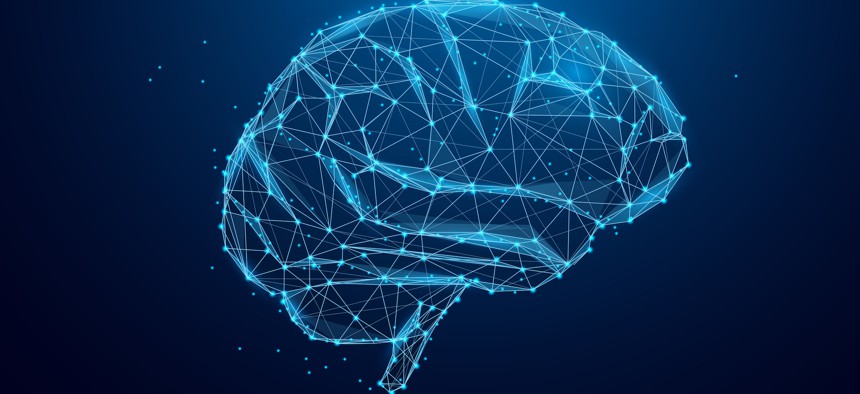DOD’s AI adoption efforts are starting to pay off, Pentagon official says

Khanchit Khirisutchalual/Getty Images
The Defense Department considers emerging technologies at “the center of how we think about planning for what the future of the military should look,” according to the head of the Pentagon’s Force Development and Emerging Capabilities office.
The Department of Defense is working to embrace artificial intelligence technologies by empowering new offices and better harnessing the technical prowess of the commercial sector, although early use cases of the emerging tools are still primarily limited to more mundane tasks, a Pentagon official said during an event hosted by the Center for Strategic and International Studies on Tuesday.
Michael C. Horowitz, deputy assistant secretary of defense for Force Development and Emerging Capabilities — or FDEC — said “we’ve launched initiatives designed to improve our [AI] adoption capacity, and I think we're really starting to see them pay off.”
Horowitz referenced a variety of Pentagon decisions that he said “have been disruptive, but are important for prioritizing AI and autonomy.” This includes efforts to streamline department oversight, as well as initiatives to better embrace the technical capabilities of the private sector.
“We've created organizations like the Office of Strategic Capital to better work with companies, including potentially in the AI and autonomy space,” Horowitz said, while also pointing to the Pentagon’s April 2023 decision to require the Defense Innovation Unit to report directly to the Defense Secretary as an acknowledgment of the need to more effectively adopt commercial technologies.
Horowitz also cited the creation of his position in July 2023 — which combined oversight of DOD’s force development and emerging capabilities offices — as another example of the department working to smooth out challenges in the adoption of AI and autonomous tools.
“That really shows that we're not just thinking about emerging capabilities as off to the side, as a niche area,” Horowitz said. “It shows the way that we've brought them really into the center of how we think about planning for what the future of the military should look like.”
Both FDEC and the Chief Digital and Artificial Intelligence Office — or CDAO — are located within the Office of the Secretary of Defense, which includes the Pentagon’s top-level decision makers. CDAO, which reached full operating capacity in June 2022, is tasked with accelerating DOD’s adoption of AI, data and analytics departmentwide.
Horowitz said his team “works really closely” with CDAO, although he said the other office is more focused on figuring out ”how can we accelerate adoption,” whereas FDEC is focused more on issues where “policy plays a leading role” in the adoption of AI capabilities.
“What it ends up meaning is that, in a lot of cases, we’re left seat-right seat with CDAO on particular policy issues, but there are certainly places where they’re in the lead — and should be — specifically when it comes to how it is that we accelerate doing AI effectively in the department,” he added.
Efforts to deliberately outline the Pentagon’s approach to adopting emerging technologies moving forward have also laid the groundwork for DOD to better field AI-enabled capabilities.
Horowitz said the Pentagon’s updated data, analytics and AI adoption strategy — which was developed and released by CDAO in November 2023 — “takes a good shot at updating the prior strategy from 2018 and signaling the way that we want that [development, security and operations] perspective infused in how we're thinking about AI adoption.”
Even with the updated guidance and the department’s move toward more readily embracing emerging tools, however, Horowitz stressed that AI should be thought of as more of “a general purpose technology.” For now, he said, there are “lots of back office roles where we imagine employing AI and then, you know, [we will] move closer to the battlefield.”
AI tools, Horowitz noted, are currently helping officials more expeditiously parse large quantities of data. He noted, in particular, that the Army “is trying to use AI” to accelerate the process of aggregating information for promotion boards, which he said means that more time can be spent “focusing on how do we promote the most talented officers to future roles.”






